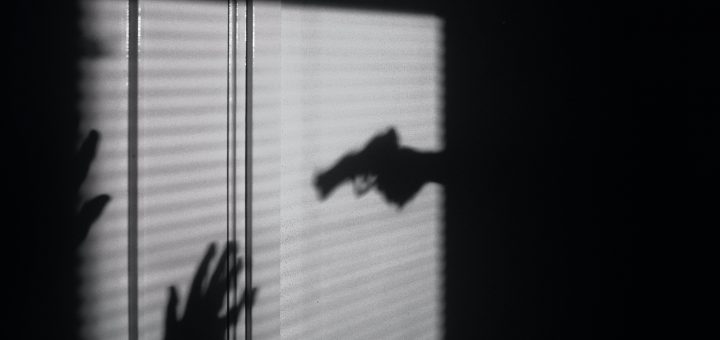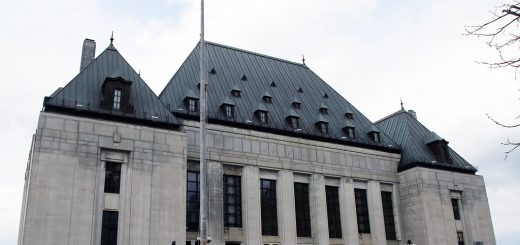Reaffirming the Grant Test in R v Reilly

When evidence is collected via conduct that violates an accused person’s rights under the Canadian Charter of Rights and Freedoms, 1982 Sched B to the Canada Act 1982 (UK), 1982, c 11 [Charter], courts must analyze whether theevidence ought to be excluded as provided by s. 24(2) of the Charter. The s. 24(2) analysis was concisely articulated by the Supreme Court of Canada (“SCC”) as a three-part test in R v Grant 2009 SCC 32 [Grant]. More than a decade later, the SCC revisited the Grant test again in R v Reilly 2021 SCC 38 [Reilly].
In Reilly, the accused was a suspect in two armed robberies. While investigating the robberies, the police, who were familiar with the accused, arrested and searched him in his home without a warrant, contrary to his s. 8 Charter right against unreasonable search and seizure. The accused sought to have the evidence that was collected in the unlawful search and seizure excluded under s. 24(2) of the Charter. While the trial judge dismissed the accused’s submissions to exclude the evidence, the British Columbia Court of Appeal (“BCCA”) reversed the ruling, relying on the trial judge’s incorrect application of the Grant test. Justice Moldaver, on behalf of the SCC, affirmed the BCCA’s conclusion and emphasized the need to apply Charter analyses stringently.
The Facts
In November 2017, two separate armed robberies took place in Burnaby, British Columbia. As the perpetrator brandished the same firearm in both robberies, investigators determined the robberies were linked. On the morning of November 17, 2017, a suspect in the first robbery was arrested and identified the accused as having been involved (R v Reilly 2018 BCPC 362 [Reilly I], para 14). That afternoon, the Burnaby Royal Canadian Mountain police (“RCMP”) and the Metro Vancouver Transit Police were informed that the accused was involved in the two robberies. Because the accused had been under probation, the police readily obtained his address (Reilly I, para 17).
Later that evening, Constables Sinclair and Adzijaj visited the accused’s home to perform a regular “knock and announce” curfew check, which involved checking in on the accused without actually entering his home (Reilly I, para 23). Although the plan was to knock and wait for the accused to come out himself, Constable Sinclair decided to enter the accused’s home after finding the door was open (Reilly I, para 27). Both constables then knocked on the door of the accused’s suite, announced their presence and requested identification (Reilly I, para 31). Before the accused could respond, Constable Sinclair entered the accused’s suite and advised him that he was under arrest for robbery (Reilly I, para 32). Upon arresting the accused, the constables searched him and his residence (Reilly I, para 35). While the constables testified that the search was to make sure no other occupants were in the residence, they found a cardboard box containing “what [they] believed to be vape juice that is used for e-cigarettes” and a black mask [Reilly I, paras 36 and 48]. Nothing was taken or touched during the search.
After the search, the RCMP drafted an Information to Obtain (the “ITO”) in support of a search warrant for the residence, pursuant to s. 487 of the Criminal Code, RSC 1985, c C-46 (Reilly I, para 5). The search warrant application was approved and the warrant was executed the next day. Various items were seized, including the evidence the constables had found during the clearing search (Reilly I, para 7).
The accused applied for a notice seeking an order to exclude evidence under s. 24(2) of the Charter as a result of the s. 8 rights violations in the unlawful arrest and searches (Reilly I, para 8). While the accused also raised the issue of the validity of the ITO and the related search warrant, the courts agreed that the search warrant was validly issued. As a result, the search warrant’s validity was not an issue raised before the SCC (Reilly I, para 90; R v Reilly 2020 BCCA 369 [Reilly II], para 49).
The Grant Test
The Grant test stipulates that once state conduct is found to have infringed a Charter right, the court is required to apply the following three factors to “assess and balance the effect of admitting the evidence on society’s confidence in the justice system”(Grant, para 71):
- the seriousness of the Charter-infringing state conduct (admission may send the message the justice system condones serious state misconduct),
- the impact of the breach on the Charter-protected interests of the accused (admission may send the message that individual rights count for little), and
- society’s interest in the adjudication of the case on its merits (Grant, para 71).
The SCC in R v Le 2019 SCC 34 summarized the principles of the Grant test: the first two lines of inquiry pulls the court towards excluding evidence while the third line of inquiry—reviewing the society’s interest in adjudicating the case on its merits—pulls the court towards its admission.
The Trial Judge’s Application of the Grant Test
The trial judge began by identifying the three instances where the accused’s s.8 Charter right was breached: when Constable Sinclair entered the residence; when he entered the accused’s bedroom to arrest himt; and when the police conducted a clearing search (Reilly I, para 91). The trial judge admonished Constable Sinclair, stating that but for the constable’s conduct, “the police otherwise conducted themselves in a professional manner” (Reilly I, para 95).
Upon finding that there was a breach of the accused’s s. 8 Charter rights, the trial judge proceeded to apply the Grant test. First, he stated that Constable Sinclair’s conduct in entering the residence and the accused’s room was serious. However, the trial judge held that because the constable’s conduct was not expressly approved by a senior officer, “the overall state conduct” would not fall at the serious end of the spectrum (Reilly I, para 104). The trial judge concluded that the evidence obtained would not risk bringing the administration of justice into disrepute and should be included (Reilly I, paras 105-6).
On the second inquiry in the Grant test, the trial judge held that the warrantless entry was an unjustified and significant intrusion on the accused’s residence (Reilly I, para 111). Nevertheless, the fact that no property was seized and there was no intrusion of the accused’s dignity (e.g., no strip searches were conducted), the state conduct could not be viewed as “profoundly intrusive” (Reilly I, para 112). Finally, on the last question in the Grant test, the trial judge held that the society’s interest in adjudicating the case on its merits favoured the inclusion of evidence, as it was reliable and could have a significant impact on the case (Reilly I, para 118).
Reilly II: The BCCA Corrects the Trial Judge’s Error
The majority of the BCCA found that the trial judge made two errors in his decision. Firstly, he failed to assess the seriousness of the Charter-infringing conduct properly, and secondly, he failed to weigh the Grant factors correctly.
Recall, when conducting the first Grant inquiry, the trial judge suggested that because the other officers were not involved in Constable Sinclair’s misconduct and he had acted without their authorization, the totality of the state conduct was less serious (Reilly II, para 100). The BCCA rejected this approach, stating that “the Charter‑compliant conduct of other officers” could not be viewed as attenuating the seriousness of Constable Sinclair’s misconduct (Reilly II, para 102). Thus, the trial judge incorrectly assessed the seriousness of the conduct.
Additionally, the BCCA found that the trial judge erred at every step of the Grant test in drawing conclusions as to whether there were factors in favour or opposed to the admission of evidence (Reilly II, para 113). The majority held that the
evaluative exercise of whether the admission of evidence obtained in a manner that infringed a Charter right would, having regard to all the circumstances, bring the administration of justice into disrepute is the question to the end of which the three lines of inquiry identified in Grant are undertaken (Reilly II, para 114, emphasis added).
In other words, the BCCA stated that the principles underlying the Grant test require an overall weighing and balancing exercise at the end of all three inquiries (Reilly II, para 115). The trial judge’s practice of drawing conclusions at the end of each step of the inquiry was deemed not to properly balance and weigh the factors for the purpose of an overall assessment (Reilly II, para 116).
Based on their reapplication of the Grant test, the BCCA held that “the police misconduct was wilful and so serious that it is necessary to exclude the evidence obtained” (Reilly II, para 152). This finding was bolstered by the fact that the police did not discuss obtaining a Feeney warrant—required to arrest an accused in their residence—despite knowing that one would have been required to make an arrest (Reilly II, para 133).
In dissent, Justice Willcock of the BCCA stated that because the trial judge had relied on the proper test and made reasonable findings, the trial judge’s assessment should be afforded deference and the appeal should be dismissed (Reilly II, para 156). Justice Willcock concluded that the balancing of the Grant factors were correct in law as the trial judge had applied all three enumerated factors in his assessment (Reilly II, para 180).
The SCC’s Critique
Justice Moldaver, giving a unanimous oral judgement for the court, affirmed the BCCA majority’s reasoning and dismissed the appeal. He added that conducting the balancing analysis within the first two Grant factors would “water down any exclusionary power these factors may have”, undermining the application of s. 24(2) (Reilly, para 2).
The SCC pointed out an additional error made by the trial judge and left unaddressed by the BCCA: the trial judge had not considered the clearing search conducted by the police in the seriousness inquiry of the Grant factor. Although both the trial and appellate-level courts weighed the unlawful entry and arrest in the seriousness analysis, the search was largely ignored in assessing the seriousness of the police misconduct. Justice Moldaver vehemently discouraged such negligence, asserting that “trial judges cannot choose which relevant Charter-infringing state conduct to consider” (Reilly, para 3).
Conclusion
While brief, the SCC’s decision in Reilly affirms that trial judges must consider Charter principles and tests with stringency. In line with Justice Willcock’s dissent at the appellate court level, the trial judge’s application of the Grant test was not incorrect per se; the three factors were considered and a final balancing act did occur. The trial judge’s choice to conduct a balancing review at each step of the test wasn’t necessarily wrong, as courts had never dismissed the approach explicitly.
Nevertheless, the SCC’s insistence on the sequence of applying the s. 24(2) test, with the balancing exercise coming at the end after all three factors were considered, reflects the judiciary’s general desire to respect Charter rights at the highest standard in the face of criminal procedures. On a broader level, the Reilly decision serves as a reminder to trial judges of their role as gatekeepers in maintaining justice and protecting liberties in the face of state misconduct.







Join the conversation